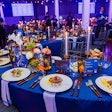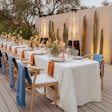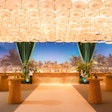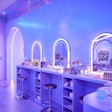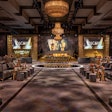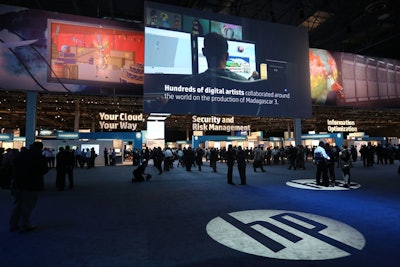
Producing an event, whether it’s a conference, a trade show, a fund-raiser, a product launch, or some other gathering, takes a substantial amount of time and resources. Guest lists, agendas, decor, marketing, technology—all of these things require attention and decisions. But according to Ben Nazario, senior vice president at Sparks, planners should also allocate time to consider the finer details. “The way that people absorb and engage in experiences, and the way they remember them, has a lot to do with the details. And it’s the small details that add up to make the big experience,” he says. Nazario suggests planners should aim to be “show ready” by noon the day before their event so they can walk through the experience “through the eyes of the attendees.” Here are his suggestions of five things to keep in mind.
1. Small things can leave a big impression.
Nazario says planners should consider every touch point, from the flowers on the tables at lunch to the background music that is playing. “Look at the people and companies who are doing it right. You can’t go through Disney World without seeing Mickey ears everywhere—on the Magic bands, on the door handles, on the sidewalks. And when you talk to the people that work there, they all leave the conversation with the same words, 'Have a magical day.' That’s a detail that was instilled in them,” he says. “And I challenge you to find garbage in those parks. If you aren’t looking for it you won’t even realize it, but it’s a small detail that makes a huge difference and the experience becomes that much better.”
2. Ensure your layout is logical.
Create spaces that are easy to navigate and have well-defined paths. “For HP Discover in Las Vegas, it was about a million square feet. They have a huge keynote room in the front. You sit through the opening keynote … then the whole screen raises and now it opens up the entire floor. So the attendees funnel through the stage onto the floor. It was purposeful. It was because they wanted 100 percent attention during the keynote, and then they purposely pushed them into the expo,” he says. “The way the expo was aligned and categorized made perfect sense for what they wanted to deliver. Being able to take the ginormous space and then understand the proper flow for the visitor, that was success.”
3. Words matter.
Pay attention to every piece of copy and graphics used at events, including in signage, within apps, on stages, and in videos. Nazario says to make sure the messages are concise, clear, and consistent (and of course typo-free and grammatically correct) across each element. “You don’t notice these things when they are done right, but boy you notice it when they’re done wrong. And then you are buried."
4. Body language speaks volumes.
How staff members carry themselves, how they interact with attendees, and whether they make eye contact can all impact how attendees experience an event. “Everyone notices when at a trade show booth the staff are sitting in chairs doing text messages, slumped over, versus standing straight, making eye contact, putting their hands out for a handshake. You have to train staff on how to greet and address people, and also how to stand when there is nothing happening—the white space—because people are watching when you least expect it,” he says. “If you go to a Ritz-Carlton, their people are trained to be articulate, to make eye contact, to be pleasant. They are knowledgeable, they are well-groomed, they have good posture. You don’t have a bad experience 99 percent of the time at a Ritz-Carlton.”
5. Create a sense of order.
Nazario says planners should aim to create a consistent, user-friendly experience, for example by sticking to schedules, ensuring that audiovisual equipment works properly, and minding other details. “If things are out of order, your experience is out of whack. And if it’s out of order, you don’t waste time there anymore. You often leave. That’s a big problem in the trade show industry,” he says. “Another Disney example about order—when they say there’s a parade at two o’clock on Main Street, there is a parade at two o’clock on Main Street. Things happen when they say they’re going to happen. And everyone’s happy. If the order is wrong, it’s a fiasco.”













